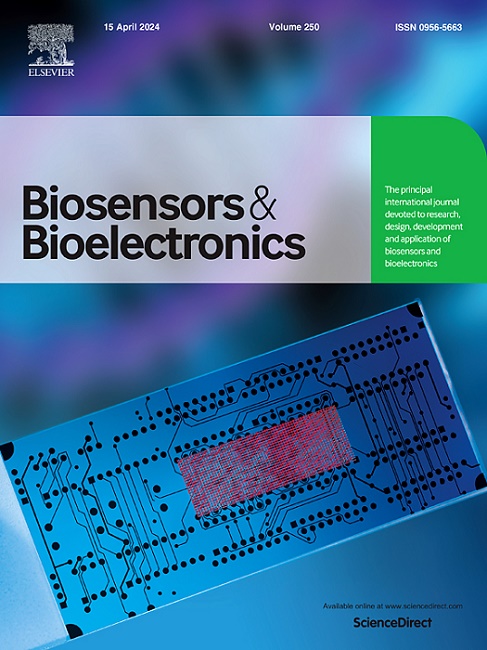Quantitative dynamics of intracellular NMN by genetically encoded biosensor
IF 10.7
1区 生物学
Q1 BIOPHYSICS
引用次数: 0
Abstract
Nicotinamide mononucleotide (NMN) is the direct precursor and a major booster of NAD+ with increasing applications in NAD+- and aging-related pathologies. However, measuring live cell NMN dynamics was not possible, leaving key questions in NMN uptake and intracellular regulation unanswered. Here we developed genetically encoded bioluminescent and fluorescent sensors to quantify subcellular NMN in live cells by engineering specific NMN-responsive protein scaffolds fused to luciferase and fluorescent proteins. The sensor dissected the multimechanistic uptake of exogenous NMN and nicotinamide riboside (NR) in live cells and further measured the NMN levels across different subcellular compartments, as well as the perturbed NMN/NAD+ ratios by external supplements. Moreover, we measured the NMN regulation by NAD(H) hydrolase Nudts and peroxisomal carrier Pxmp2 and identified Slc25a45 as a potential mitochondrial NMN regulator for its unique fingerprint on the local NMN/NAD+ ratio. Collectively, the genetically encoded sensors provide a useful tool for visualizing NMN metabolism.
利用基因编码生物传感器定量分析细胞内 NMN 的动态变化
烟酰胺单核苷酸(NMN)是 NAD+ 的直接前体和主要促进剂,在 NAD+ 和衰老相关病症中的应用日益广泛。然而,由于无法测量活细胞 NMN 动态,NMN 吸收和细胞内调控的关键问题仍未得到解答。在这里,我们开发了基因编码的生物发光和荧光传感器,通过设计与荧光素酶和荧光蛋白融合的特定 NMN 响应蛋白支架来量化活细胞中的亚细胞 NMN。该传感器剖析了活细胞对外源 NMN 和烟酰胺核苷(NR)的多机制吸收,并进一步测量了不同亚细胞区的 NMN 水平,以及外部补充剂扰乱的 NMN/NAD+ 比率。此外,我们还测量了 NAD(H) 水解酶 Nudts 和过氧物酶体载体 Pxmp2 对 NMN 的调控作用,并发现 Slc25a45 是线粒体 NMN 的潜在调控因子,因为它对局部 NMN/NAD+ 比率具有独特的指示作用。总之,基因编码的传感器为可视化 NMN 代谢提供了有用的工具。
本文章由计算机程序翻译,如有差异,请以英文原文为准。
求助全文
约1分钟内获得全文
求助全文
来源期刊

Biosensors and Bioelectronics
工程技术-电化学
CiteScore
20.80
自引率
7.10%
发文量
1006
审稿时长
29 days
期刊介绍:
Biosensors & Bioelectronics, along with its open access companion journal Biosensors & Bioelectronics: X, is the leading international publication in the field of biosensors and bioelectronics. It covers research, design, development, and application of biosensors, which are analytical devices incorporating biological materials with physicochemical transducers. These devices, including sensors, DNA chips, electronic noses, and lab-on-a-chip, produce digital signals proportional to specific analytes. Examples include immunosensors and enzyme-based biosensors, applied in various fields such as medicine, environmental monitoring, and food industry. The journal also focuses on molecular and supramolecular structures for enhancing device performance.
 求助内容:
求助内容: 应助结果提醒方式:
应助结果提醒方式:


